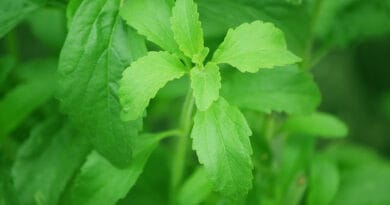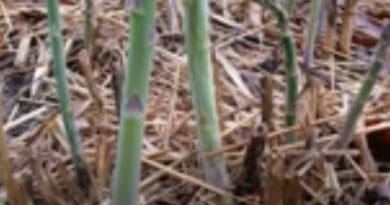Cultivation of Tinospora Cordifolia /Giloe
Tinospora cordifolia is generally named Guduchi/Amrita in Sanskrit; its Hindi name is Giloe/Gurcha; it belongs to the family Menispermaceae. It is a hereditarily assorted, enormous, deciduous climbing bush with greenish-yellow ordinary blossoms, found in every part of India. This plant has great medicinal importance, especially the stem and root. Giloe is endemic to India and can grow well in both tropical and subtropical regions with an altitude of 600 to 800 meters
Botanical Description of Tinospora cordifolia or Giloe:
1) It is a climbing deciduous shrub that has several twining branches with elongated leaves
2) Leaves are ovate and acute, 15–20 cm. in length
3) Flowers are unisexual, dioecious, yellow
4) Fruit of 3 shortly stalked subglobose drupes
5) The bark of this plant is grey-brown or creamy white, warty, papery thin, and can be peeled off easily.
6) The aerial roots of the plant arise from nodal scars of branches.
Medicinal Importance of Tinospora Cordifolia or Giloe
Giloe can be taken in powder form, juice form, and capsule form. The stem of giloe has more utility in comparison to the roots and leaves. The Important uses of Giloe are ;
1) Boosts immunity, it is a powerhouse of anti- oxidant which keeps cells healthy and disease-free
2) Used to cure chronic fever: Giloe is antipyretic, and the juice of its leaves helps to cure fever
3) Help to improve digestion
4) Giloe is used to cure several respiratory problems
5) It reduces stress and anxiety
6) Wonder plant in the treatment of diabetes
7) Helps in improving the vision
8) Used to cure asthmatic disorders
Nutritive Values of Tinospora Cordifolia or Giloe;
| Nutrients | Fresh | Dehydrated |
| Moisture % | 31.36 | 9.64 |
| Ash % | 2.3 | 5.88 |
| Carbohydrates (g) | 3.34 | 7.53 |
| Protein (g) | 2.3 | 5.23 |
| Fat (g) | 0.36 | 1.05 |
| Fibre (g) | 11.321 | 52.295 |
| Iron (g) | 5.87 | 22.55 |
| Calcium (g) | 85.247 | 210 |
| Vitamin C (mg) | 56 | 16 |
| Beta-Carotene (μg) | 303.7 | 428.5 |
| Energy (Kcal) | 88.64 | 240 |
Source: National Library of Medicine
Climate and Soil Requirements for Tinospora Cordifolia or Giloe Cultivation ;
Giloe is a plant of tropical and subtropical conditions, and it can be grown in any type of soil, but the light sandy loam soil is enriched in organic content and is more suitable for its growth. This plant can tolerate waterlogged conditions and heavy rains
Propagation of T. cordifolia/Giloe
Planting Method:
It can be grown from seeds or vegetative cuttings. Seeds take more time to mature in comparison to vegetative cutting; hence, vegetative cutting is the best. The stem cutting for vegetative propagation can be obtained from the mother plant in May-June. To achieve greater medicinal values, it requires support to grow, and it can be provided with the help of wooden stakes or trailers, or some trees like mango, etc.
Field Preparation:
Land should be well ploughed and harrowed Apply 10 tonnes of FYM and half doses of nitrogen 75 kg must be applied at the time of field preparation
Raising the propagules through nursery techniques:
1) Stem cuttings are planted in polybags of size 4 inches x 6 inches in February–March.
Intercultural operations in Tinospora Cordifolia or Giloe;
Irrigation Requirement in Tinospora Cordifolia or Giloe;
Harvesting of Tinospora Cordifolia or Giloe;
Cut the stems delicately into small pieces dry them, and keep them under the cool and airy stores
The Yield of Tinospora Cordifolia or Giloe;
As we know, the market of medicinal plants is very volatile, therefore its economy may vary
Also, Read;



